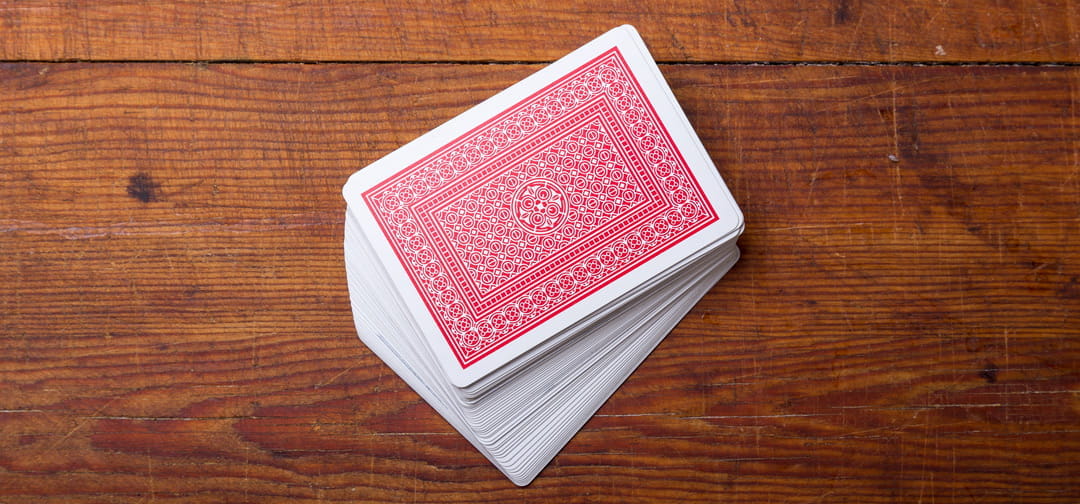Whist Rules or How to Bring Colonial Card Entertainment to Your Table
May 28, 2020 Tony ChristopherChances are you are not familiar with how to play Whist. In fact, if you ask around, not that many people will be, too. Actually, it can very well be that only your parents and grandparents will be aware of what it is. Its fame may have faded now, but it used to be immensely popular in Colonial Britain and a hobby even for the Kings at the time. As the Bridge was invented, it slowly pushed it aside and kind of had people forget about it over time.
Regardless, we think it is a great game for you and your peers and friends to have fun with. Its rules are very simple and we can assure you that once you get the hang of it, you would want to play it endlessly. Stick with us until the end as we have prepared a quick Whist rules crash course.

How to Play Whist and What You Should be Aware Of
In its classic version of the Whist card game rules, 4 people play with a standard deck of 52 cards. They are ranked from “Ace” being the highest and “2” being the lowest. Basically, follow this descending order: A, K, Q, J, 10, 9, 8, 7, 6, 5, 4, 3, 2. There are more advanced interpretations where the players involve 2 sets of decks to extend its duration and make it a tad more complicated due to the sheer number of cards. Keep in mind that the jokers should be removed from the stack of cards. The players are divided into two separate teams sitting opposite from one another with the aim to collect as many tricks (or hands) as possible in order to win.
Dealing, Selecting a Trump, and Objective of Whist
The cards are to be evenly dealt between the players with 13 being allocated to each. The final card that is supposed to go to the one handing out the cards is put face-up on the table and this determines the trump suit. Once done, the trump-determining card is collected by the dealer and the game commences with the aim of getting as many tricks as possible. You and your teammate need to get to at least 7 tricks if you are to score a point because they are allocated only after you have reached 6. For example, if you have managed to win 8, your team gets 2 points.
Usually, the objective as per the classic Whist rules is to reach 5 points. The first team to do so wins the round. The players engaged in the game have the complete liberty to alter the number of points that need to be collected, as well as the rounds. Why not, especially when you and your friends are having fun anyway.
How the Tricks Work
Getting used to following the cards and knowing what to place on the table is the most important aspect of any card game. When it comes to knowing how to play whist it isn’t an exception. The person on the dealer’s left kicks off the game and places a card of a suit of his/her choice. It’s important to know the value of each card as your objective is to top the card your opponent has placed with one that is stronger from the same suit or trump it. There are a few possible scenarios that can happen when you play Whist. Knowing them would help you be as optimal in your play as possible. Let’s say the opponent plays a Ten of Hearts:
- You don’t have a higher card, place a lower card of the same suit.
- You have a higher card, place it because this can win you the trick.
- You don’t have a card of the same suit place a trump.
- You don’t have a trump or a card from the same suit. Place a low-value card of any suit.
- Your teammate has placed a trump card already. In this case, you can are not obliged to place a trump yourself. Either follow suit or place a low-value card you need to get rid of.
These are your basic scenarios in the “Whist Rules” rulebook that you need to be aware of. When you practice them a few times you will see how quickly the game will crawl under your skin. After all, there should be a reason why it was popular even among the members of the Royal family, right?
Remain Silent and Keep Track

Talking and commenting on what is going on strictly forbidden. You are not allowed to discuss the outcomes either. Signalling in any way is naturally against the rules, as well. It’s important to remember that the rules of Whist call for constant attention from your side, should you want to successfully defeat your opponents. You need to follow the cards, what has been dealt on the table and what hasn’t, as well as who is playing what. This will give you an idea of what cards to play when it is your turn and how the cards in your hand will complement these in your teammate’s hand. You need to win the trick and this is the most effective way to do so. Sometimes playing blind can help but it can only stretch for this far.
How Did Whist Come About?
To segue into what we are going to talk about next, what are the origins of Whist and its name? As we mentioned in the very beginning, the game came to life during Colonial times back in the 17th century when fine gentlemen used to play it on scientific principles over at the Crown Coffee House in Bedford Row. Members of these groups began to tutor other esteemed members of the society and the game amassed a considerable following among the elite and this trend continued until bridge came to life and took its place in the 1890s.
Otherwise, it’s the successor of a similar game from a century earlier called trump aka ruff. The name of the game is taken from the word ”whist (or wist) from that same period which used to mean silent, quiet, and attentive. You might recognise it in the modern-day word “wistful”, as well. They share the same origin.
Whist Rules Alterations
As with everything else, even if the classic version’s popularity slowly fades away, there are numerous variations of how to play Whist that have come into existence with different things added to the original formula in order to make it more exciting, unpredictable, or awarding. Here are a few of them that you can take something out of and attribute a few twists to the game in order to make it more exciting and unpredictable:
- Bid Whist – The same as the original, but with bidding. Popular in the USA
- Blob – each player predicts the number of tricks one will make during the game. If wrong, they are penalized, or blobbed in.
- Catch the Ten – The deck is halved and the 10 is the most valuable. Popular with the Scottish.
- Hearts – To make the game spicier, the object is to avoid winning tricks that contain specific cards stated in the beginning.
- Knock-out Whist – Win no tricks and you will be eliminated.
- Solo Whist – Popular among Brits, in this variation, the players bid on whether they will win 5, 9 ,or 13 tricks, or lose every one.
- Who’s Your Bobby? – The twist here is that the Jack of Diamonds (Bobby) is the only trump in the game and whoever wins the trick with it, instantly wins the game.



